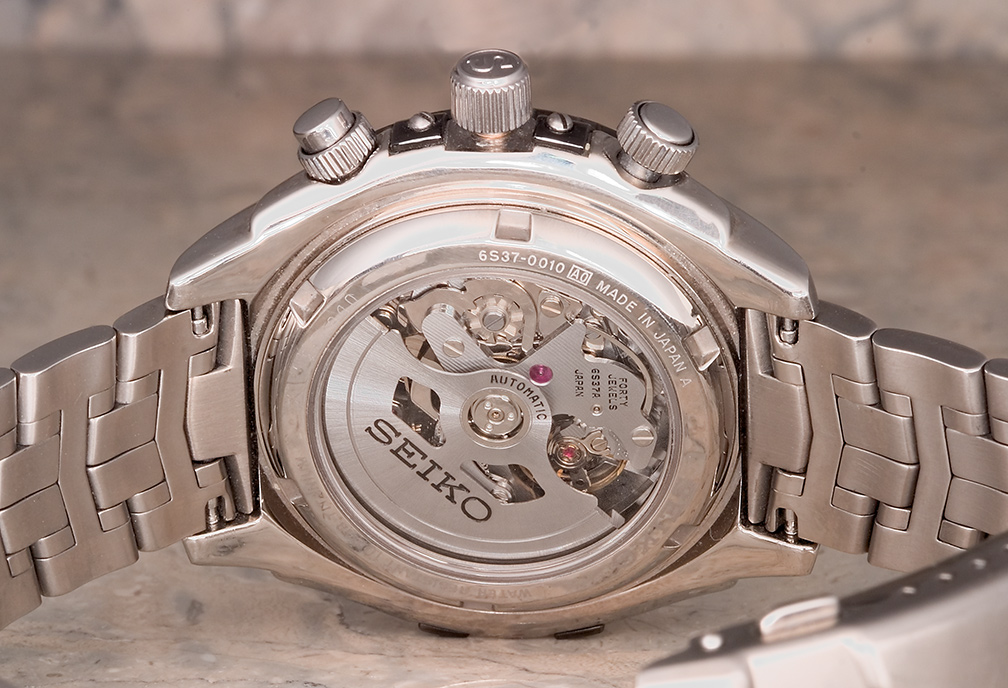Seiko occupies a most interesting place in the world of watch manufactures, perhaps because it is in fact an industrial conglomerate producing everything from camera shutters and ladies' jewelery to computer components and electric shavers. When it comes to keeping time, they pretty much do it all: sports timers, CPU clocks, solar clocks, metronomes and of course watches. Did I mention golf clubs, eyeglass lenses and frames, portable GPS systems and accupressure appliances...With this in mind it should not be surprising that Seiko manufactures or proprietarily sources almost everything to do with their wristwatches, at a level perhaps comparable only with Rolex and Swatch, leaving virtually everybody else far behind. Still, Seiko is not a European company, and not really primarily in the wristwatch business, and their way of doing things is distinctly idiosyncratic. While best known for their ferociously varied line of low-to-mid-priced offerings, mostly quartz controlled, they also produce extraordinarily rugged watches with automatic movements, kinetic, solar and spring-drive watches, and world-class chronometers and tool watches within the Credor, Prospex and Grand Seiko lines, all almost entirely in-house, right down to the lubricants.
The present Flightmaster is part of Seiko's high-end "Prospex" line, and it is quite a piece of work. Glossy black-dialed, with exceptionally luminous hands and markers and sporting a bidirectional timing/compass bezel and a dive-watch case and profile, this chronograph seems to be some sort of crossover watch. The crown screws down and the chronograph buttons lock, but it also has a display back. Besides the primary time indications, the Flightmaster includes the date at 4:30 (with a dial-matching wheel), power reserve at about 2:15, and elapsed time counters for seconds, minutes (30) and hours (12), all with bright yellow hands; the seconds-hand also has a luminous spot. The case is of modern sports-watch proportions, 43mm diameter exclusive of crown, and about 13mm thick. The secure squeeze- and flip-lock bracelet is durable and handsome, and the rotating bezel is anodized a shiny black. All of this is apparently titanium (except probably the crowns) and carries an excellent finish, mixing brushed and polished surfaces. There are also these weird little screws on the bezel (sort of functional) and on the case between the crown and pushers, and also opposite (sort of decorative, presumably); there is a lot going on here, somewhat in the Japanese idiom, but since almost all of it is black, gray or white the whole thing seems to hang together and truly presents a readable and functional package.
In the world of watches the design and production of a proprietary chronograph is a relatively unusual and ambitious achievement, and in this respect the Flightmaster certainly does not disappoint. Seiko competed 35 years ago in introducing (one of) the first automatic chronograph movements (caliber 6139, in 1969), and a splendid one it was, a clean-sheet design, integrated column-wheel control and sufficiently durable that many, many of them are still around and functioning very well; they weren't (and aren't) even expensive). The Flightmaster's movement is of the same temperment but distinctly more sophisticated, and yes, more expensive. On a personal level I would note that the chronograph functions work very pleasantly and smoothly, the buttons providing a nice combination of soft responsiveness and positive feedback, engaging with a slight click, and the minute and hour counters do their jobs neatly and right on cue. Pulling the crown all the way out stops the movement for exact setting. You can read a far more detailed analysis of the Flightmaster's 6S37 movement, as written by genuine watchmaker 2manywatches, at this link here.
